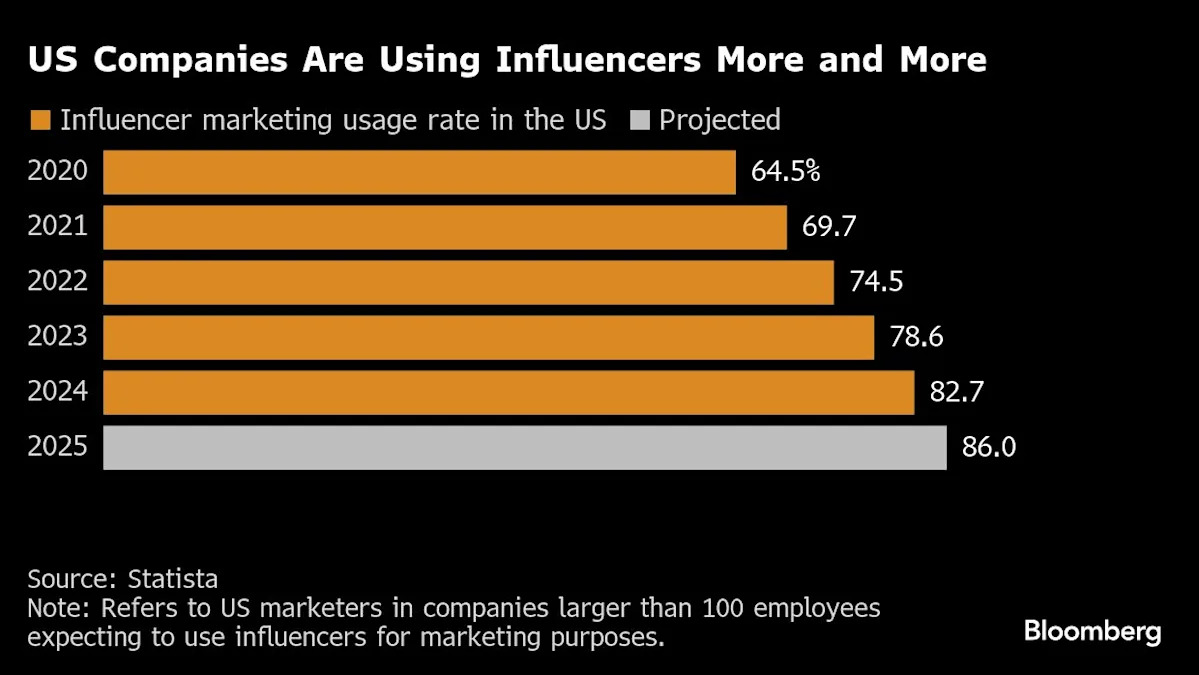Influencers Gain Traction as Brands Slash Traditional Ad Spend
As global advertising budgets face increasing scrutiny, influencer marketing is emerging as a powerful and cost-effective alternative for brands. One compelling example is Ashton Hall, a social media influencer whose morning ritual of dunking his head in iced Saratoga Spring Water has become a captivating trend for his followers. For Saratoga Spring Water, Hall’s enthusiastic endorsements are a marketing goldmine.
Unlike traditional advertisements, which often come with high production costs and limited engagement, influencer campaigns leverage authenticity and relatability. Hall’s consistent use of Saratoga Spring Water — not only for drinking but also for brushing his teeth and his cold immersion routine — showcases how personal branding can seamlessly promote a product.
Why Influencer Marketing Continues to Rise
As brands tighten their overall marketing budgets, many are shifting their focus to influencer-driven strategies. According to industry analysts, influencer marketing offers a more targeted approach, allowing companies to reach niche audiences without breaking the bank. The appeal lies in the direct connection influencers have with their followers, creating a sense of trust that traditional ads often lack.
“Influencer content doesn’t feel like an ad,” said marketing consultant Dana Reeves. “It feels like a recommendation from a friend, and that’s where its power lies.”
With platforms like TikTok, Instagram, and YouTube offering direct access to millions of users, brands are increasingly partnering with content creators to build awareness and drive sales. These collaborations often come at a fraction of the cost of TV spots or large-scale digital campaigns.
Micro-Influencers Offer Big Returns
While mega-influencers with millions of followers still command attention, many brands are turning to micro-influencers — those with smaller, highly engaged audiences. These creators are often perceived as more relatable and trustworthy, which can lead to higher conversion rates for brands.
“We’ve seen strong ROI from micro-influencers who have deep connections with their communities,” said Jessica Milner, head of marketing at a natural beverage company. “Their authenticity drives engagement that’s hard to replicate in traditional media.”
Micro-influencers also provide more budget flexibility, allowing companies to run multiple campaigns simultaneously across different demographics and regions.
The Data Behind the Trend
Recent studies support the growing popularity of influencer marketing. A report by Influencer Marketing Hub found that the industry is expected to reach $24 billion in value by the end of 2024. Additionally, over 80% of marketers who have used influencer marketing consider it effective.
Brands are not only increasing their spending on influencer partnerships but also investing in tools to measure their impact more accurately. Metrics such as engagement rate, click-throughs, and conversion data are now central to evaluating the success of influencer campaigns.
“We no longer view influencer marketing as experimental,” said Michael Torres, director of digital strategy at a global ad agency. “It’s now a core component of our media mix.”
Challenges and Ethical Considerations
Despite its benefits, influencer marketing is not without challenges. Transparency and authenticity are critical, and regulations around disclosure continue to evolve. Influencers are required to clearly indicate paid partnerships, but enforcement can be inconsistent.
There are also concerns about influencer fatigue, where audiences become desensitized to promotional content. To combat this, brands are focusing on long-term relationships with influencers, allowing for more organic and integrated messaging over time.
“We aim for partnerships that go beyond a single post,” said Milner. “When an influencer genuinely believes in our brand, it resonates more deeply with their audience.”
The Future of Influencer Marketing
As economic pressures continue to reshape advertising priorities, the influencer model is proving resilient. Its ability to adapt quickly and connect on a personal level makes it especially appealing in uncertain times.
For companies like Saratoga Spring Water, the impact of influencer endorsements can be both immediate and long-lasting. Ashton Hall’s daily routines, broadcast to thousands of loyal followers, have become a form of immersive storytelling that traditional ads struggle to match.
As brands look ahead, many will likely increase their investment in influencer marketing, not just as a supplemental tactic but as a cornerstone of their broader communication strategies.
This article is inspired by content from Yahoo Finance. It has been rephrased for originality. Images are credited to the original source.












Leave a Reply